I have been trying to build a RandomForestClassifier() (RF) model and a DecisionTreeClassifier() (DT) model in order to get the same output (only for learning purposes). I have found some questions with answers where I used those answers to build this code, like the required parameters to make both models equal but I can't find a code that actually does it, so I'm trying build that code:
import numpy as np
import seaborn as sns
import matplotlib.pyplot as plt
from sklearn.ensemble import RandomForestClassifier
from sklearn.tree import DecisionTreeClassifier
from sklearn.datasets import make_classification
from sklearn.model_selection import train_test_split
random_seed = 42
X, y = make_classification(
n_samples=100000,
n_features=5,
random_state=random_seed
)
X_train, X_test, y_train, y_test = train_test_split(X, y, random_state=random_seed)
DT = DecisionTreeClassifier(criterion='gini', # default
splitter='best', # default
max_depth=None, # default
min_samples_split=3, # default
min_samples_leaf=1, # default
min_weight_fraction_leaf=0.0, # default
max_features=None, # default
random_state=random_seed, # NON-default
max_leaf_nodes=None, # default
min_impurity_decrease=0.0, # default
class_weight=None, # default
ccp_alpha=0.0 # default
)
DT.fit(X_train, y_train)
RF = RandomForestClassifier(n_estimators=1, # NON-default
criterion='gini', # default
max_depth=None, # default
min_samples_split=3, # default
min_samples_leaf=1, # default
min_weight_fraction_leaf=0.0, # default
max_features=None, # NON-default
max_leaf_nodes=None, # default
min_impurity_decrease=0.0, # default
bootstrap=False, # NON-default
oob_score=False, # default
n_jobs=None, # default
random_state=random_seed, # NON-default
verbose=0, # default
warm_start=False, # default
class_weight=None, # default
ccp_alpha=0.0, # default
max_samples=None # default
)
RF.fit(X_train, y_train)
RF_pred = RF.predict(X_test)
RF_proba = RF.predict_proba(X_test)
DT_pred = DT.predict(X_test)
DT_proba = DT.predict_proba(X_test)
# Here we validate that the outputs are actually equal, with their respective percentage of how many rows are NOT equal
print('If DT_pred = RF_pred:',np.array_equal(DT_pred, RF_pred), '; Percentage of not equal:', (DT_pred != RF_pred).sum()/len(DT_pred))
print('If DT_proba = RF_proba:', np.array_equal(DT_proba, RF_proba), '; Percentage of not equal:', (DT_proba != RF_proba).sum()/len(DT_proba))
# A plot that shows where those differences are concentrated
sns.set(style="darkgrid")
mask = (RF_proba[:,1] - DT_proba[:,1]) != 0
only_differences = (RF_proba[:,1] - DT_proba[:,1])[mask]
sns.kdeplot(only_differences, shade=True, color="r")
plt.title('Plot of only differences in probs scores')
plt.show()
Output:
I even found an answer that compares an XGBoost with DecisionTree saying they are almost identical, and when I test their probabilities outputs they are fairly different.
So, am I doing something wrong here? How can I get the same probabilities for those two models? Is there a possibility to get True for those two print() statements in the code above?
